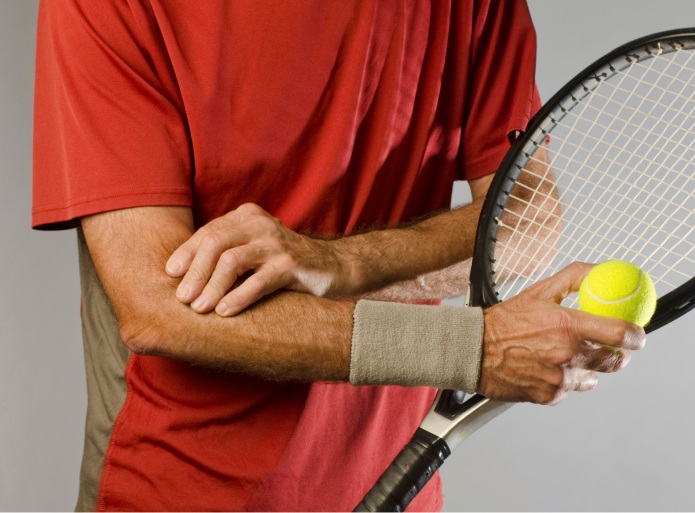Tennis Elbow – Part 1
Tennis elbow (also commonly referred to as lateral epicondalgia, lateral elbow pain, lateral elbow tendinopathy, lateral epicondylitis) is a very common condition in musculoskeletal practice. This first part of a two part series will look at some other conditions that present very similarly to tennis elbow.
Whilst pain on the lateral (outside) aspect of the elbow is commonly originating from the tendons of the wrist extensor muscles (the classic “tennis elbow”), there are a number of other conditions that may present as pain in the area. Whilst traditional tennis elbow is notoriously slow to respond to treatment interventions, another reason for prolonged recovery time is inaccurate diagnosis, and subsequently an inappropriate treatment plan.
Elbow joint pain
The first area that may mimic tennis elbow is the elbow joint itself. Joint pain should be suspected particularly in younger patients. Tennis elbow is a condition that typically affects people between 35 and 60. For younger, especially very active people, it is likely that there is joint involvement. Another clue is if the pain is worse in elbow flexion (with the elbow bent) as typical tennis elbow is worse with the elbow straight.
Structures around the elbow joint that are thought to cause pain are the ligaments (particularly the lateral collateral ligament, or LCL), the plica (a fold of joint tissue that can become squeezed between the bones of the upper arm and the forearm), the cartilage of the joint, and the bursa (a sack of fluid that acts as a shock absorbing structure). For patients with a history of acute elbow injury, or a history of high force through work or sport, osteoarthritis may develop in the elbow joint and cause pain in the lateral aspect.
In children, a condition called osteochodrosis dissecans may cause pain and loss of function, where pieces of bone in the joint start to separate from the main bone due to a lack of blood supply. As tennis elbow is quite rare in this population, children suffering ongoing elbow pain should undergo appropriate imaging in order to make an accurate diagnosis, especially due to the serious outcomes associated with mismanagement.
Nerve pain
It is quite common for the radial nerve to cause pain in the outside of the elbow, and this nerve may become entrapped or inflamed at a number of different sites, including the neck and shoulder region, the radial tunnel at the elbow, and within some of the muscles around the elbow and forearm, in particular the supinator muscle. Sometimes pain of neural origin will be accompanied by other neural symptoms such as numbness, weakness, and pins and needles. The type of neural symptoms, including their location and the nature, will differ depending on the area of entrapment, and as such accurate diagnosis is important. Some of the treatment modalities sometimes used to address tennis elbow, such as bracing and massage of the forearm muscles, will actually increase the pressure around the sensitised nerve and increase pain.
Systemic Conditions
Systemic inflammatory conditions such as spondyloarthropathies may also cause pain in the area. Patients with pain in other joints, symptoms related to the eyes, skin or digestive system, or a personal or family history of systemic inflammatory disorders should undergo appropriate testing to rule this out as a source of elbow pain.
Summary
The management for any of the above conditions will likely be very different to that of tennis elbow, and as such it is imperative that an accurate diagnosis is made. If you or someone you know are experiencing lateral elbow pain, please contact your trusted medical professional to have the injury properly diagnosed to optimise your chances of a positive outcome.
Next week in part 2 of this series we discuss possible management options for tennis elbow.

Sam Gilbert is the co-founder and clinical director of Club 360. He has a bachelor’s degree in physiotherapy and a master’s degree in exercise science.
